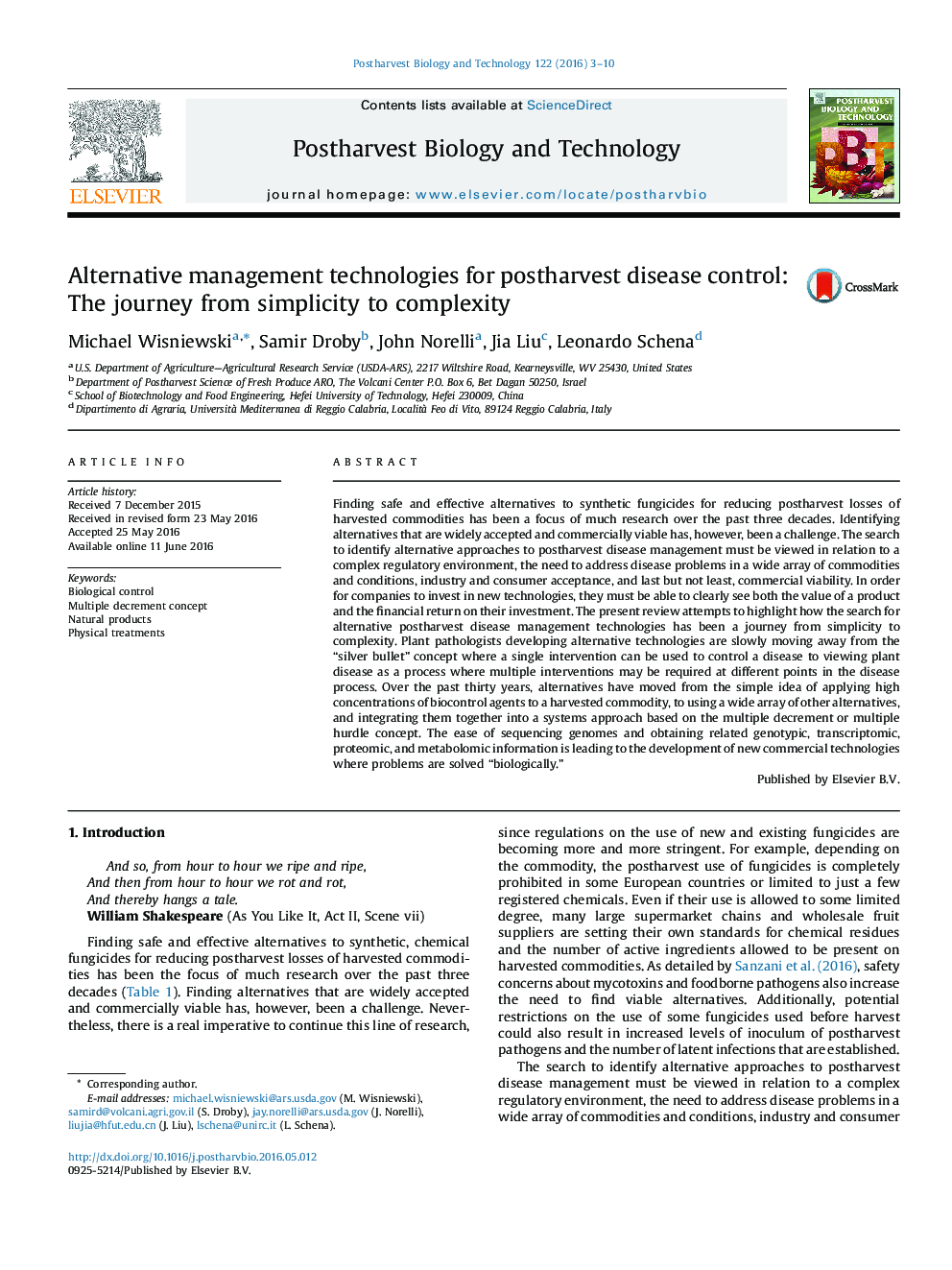| Article ID | Journal | Published Year | Pages | File Type |
|---|---|---|---|---|
| 4517707 | Postharvest Biology and Technology | 2016 | 8 Pages |
•Postharvest disease control alternatives have moved from simplicity to complexity.•An expanded view of biological control encompasses a broad array of approaches.•The multiple hurdle concept integrates alternatives into a systems approach.•We are moving from an age of chemistry into an age of biology.
Finding safe and effective alternatives to synthetic fungicides for reducing postharvest losses of harvested commodities has been a focus of much research over the past three decades. Identifying alternatives that are widely accepted and commercially viable has, however, been a challenge. The search to identify alternative approaches to postharvest disease management must be viewed in relation to a complex regulatory environment, the need to address disease problems in a wide array of commodities and conditions, industry and consumer acceptance, and last but not least, commercial viability. In order for companies to invest in new technologies, they must be able to clearly see both the value of a product and the financial return on their investment. The present review attempts to highlight how the search for alternative postharvest disease management technologies has been a journey from simplicity to complexity. Plant pathologists developing alternative technologies are slowly moving away from the “silver bullet” concept where a single intervention can be used to control a disease to viewing plant disease as a process where multiple interventions may be required at different points in the disease process. Over the past thirty years, alternatives have moved from the simple idea of applying high concentrations of biocontrol agents to a harvested commodity, to using a wide array of other alternatives, and integrating them together into a systems approach based on the multiple decrement or multiple hurdle concept. The ease of sequencing genomes and obtaining related genotypic, transcriptomic, proteomic, and metabolomic information is leading to the development of new commercial technologies where problems are solved “biologically.”
